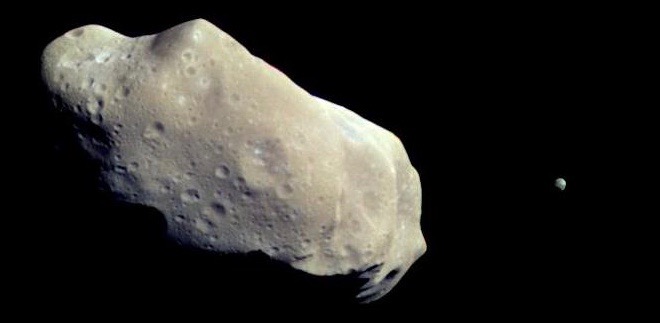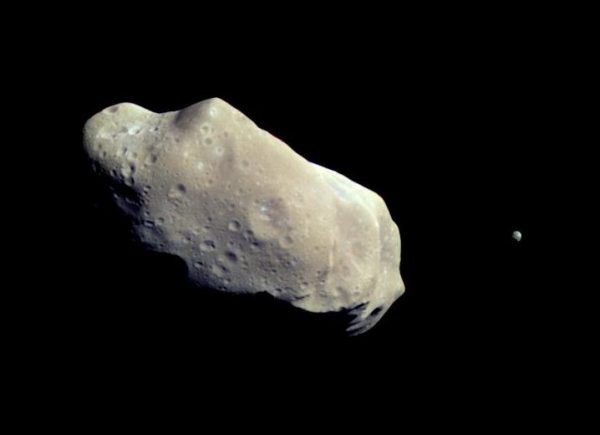The sky is full of moons

On the 5th of September 2016, the Minor Planet Center reported that a small moon is in orbit around asteroid (6016) 1991 PA11. This newly discovered companion is actually just one of many such objects.
By Adrien Coffinet
The Moon, with a capital “M”, has since long ago been known to orbit the Earth. However, we had to wait until 1610 to discover satellites around other planets. Indeed, that year, Galilei Galileo managed to observe the four largest companions of Jupiter: Callisto, Europa, Ganymede and Io. Many more planets’ companions would soon be discovered by other people: first of all, Huygens discovered Saturn’s major satellite Titan in 1655. At the end of the 18th century, 14 such “moons” (with a lowercase “m”) were known. By 1975, this number had grown to 35: 1 around the Earth, 2 around Mars, 14 around Jupiter, 11 around Saturn, 5 around Uranus and 2 around Neptune. One can notice that, at this time, only major planets were known to have satellites.

Asteroid Ida with moon Dactyl. The small dot has a diameter of 1,4 km. (Image NASA)
The situation started to evolve in 1978, when Pluto’s large companion, Charon, got discovered. Of course, Pluto was still considered as a planet at that time, but the discovery of Charon became actually a big step toward the demotion of Pluto: indeed, the observation of Pluto and Charon’s relative motions allowed us to measure the real mass of Pluto: 1/500 of Earth’s mass, i.e. 25 times less than Mercury and 6 times less than the Moon. Retrospectively, Charon was the first satellite discovered around an object today considered as a “minor planet” (1). Nonetheless, Pluto is large enough to be round and is therefore considered today as a “dwarf planet” (2). Then, would only those round-shaped objects – planets and dwarf planets – have companions, or would smaller objects – such as potato-shaped asteroids – also have some?
The answer came from Galileo in 1993. Indeed, while it was exploring (243) Ida, the spacecraft photographed a small object next to the asteroid. This body, named Dactyl, became the first object officially recognised as a minor-planet satellite. Even if these objects had long been predicted to exist, we finally had the proof of it! Since then, more than 20 years have passed, and as of September 9th, 2016, in addition to the more than 170 known planetary satellites (3), we know 301 satellites around 285 minor planets [complete list here], including several minor planets with several satellites – the record holder being Pluto with its five companions. Moreover, in addition to the four giant planets (Jupiter, Saturn, Uranus and Neptune), two “centaurs” (minor planets between Jupiter and Neptune), named Chariklo and Chiron, have been discovered since 2013 to have rings! Every year, several new moons are found and expand the list: for example, in 2015, the Minor Planet Center announced the discovery or the confirmation of 14 minor-planet moons.
1 A “minor planet” is any object smaller than the planets except comets, that are in a separate catgory (some objects are nonetheless in both categories). This category, that has more than 700’000 members known to date (September 2016), therefore gather the asteroids (mostly closer to the Sun than Jupiter), the “centaurs” (between Jupiter and Neptune) and many transneptunian objects (farther than Neptune). This category should not be confused with the one of “dwarf planets”.
2 A “dwarf planet” is an object revolving around the Sun, large enough to be in hydrostatic equilibrium (so nearly spherical), but that did not clean its orbit. This last characteristic distinguish the “dwarf planets” from the “planets”. As of September 2016, five objects are officially classified as dwarf planets: Ceres, Pluto, Haumea, Makemake and Eris.
3 1 around the Earth, 2 around Mars, 67 around Jupiter, 62 around Saturn (+ at least 150 moonlets), 27 around Uranus and 14 around Neptune.

